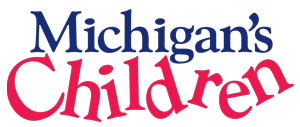Pathways to Graduation: Continuing the Conversation
At the November 3rd, Pathways to Graduation Conference, over a hundred people gathered in Lansing to discuss the barriers to bringing disengaged youth back to the education system. Attendees came from state education and workforce offices, local education agencies, recovery/reengagement programs, county departments, community colleges, universities, philanthropic organizations and other interested non-profit organizations.
Even though our Keynote speaker had to cancel at the last minute because of illness, conference attendees overwhelmingly agreed that the conference identified barriers to disengaged youths educational success. The afternoon breakout sessions brainstormed on these barriers and developed solutions that may need to increase local community development initiatives and make changes to state policies and laws.
Some of the most significant recommendations coming out of the conference are:
Dual Enrollment
- Change the calculation for Full Time Employees regarding the difference between classes vs. credits.
- Change the calculation for Full Time Employees regarding the difference between classes vs. credits.
- Requiring all state-funded post-secondary institutions to accept dual enrollment transfer credits.
- Developing fiscal incentives for both k-12 and post-secondary institutions to develop dual enrollment programs
- Develop a communication plan including the benefits of dual enrollment.
Utilizing Technology
- Fully develop broadband infrastructure so location is no longer a barrier to educational access.
- Allow for a 5th and 6th year waiver for programs that utilize a non-traditional structure, including some online coursework.
- Address issues of funding instability for seat-time waivers.
- Identify ways to add flexibility to teacher contracts to allow hours that are conducive to student’s needs.
Workforce Community Partnerships
- Programs and schools need understand the staffing needs of the businesses in their communities and develop partnerships to fill those needs.
- Increase School Administration interaction with the business community and utilize local services when possible
- Make relationships with model programs, like Michigan Works!, Kiwanis, Rotary, etc… to increase community investment in programs that serve the community’s’ youth.
- Develop Asset Maps within communities to determine what businesses and community organizations can provide – jobs, mentoring, unique leaning experiences, etc…
Community College Partnerships
- College faculty teaching at the high school or other K-12 building space – there is room to spare in many school buildings.
- Utilizing existing K-12 teachers who are qualified to become community college faculty.
- Develop a bridge from k-12 to college that makes the transition a partnership between the k-12 and post-secondary community.
- Engage community partners creatively.
- Recognize dual enrollment as a selling point for both systems – K-12 and post-secondary.
- Improve local knowledge of existing flexibility for credit transfer options.
- Facilitate a common definition of readiness – high schools have a readiness definition and post-secondary institutions have different readiness definitions.
We’re currently working on the final report from the conference and will be sharing the recommendations with the legislature and with our partners via the Graduate Michigan Action Network.
-Beth Berglin
